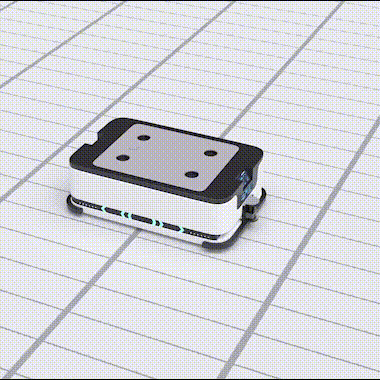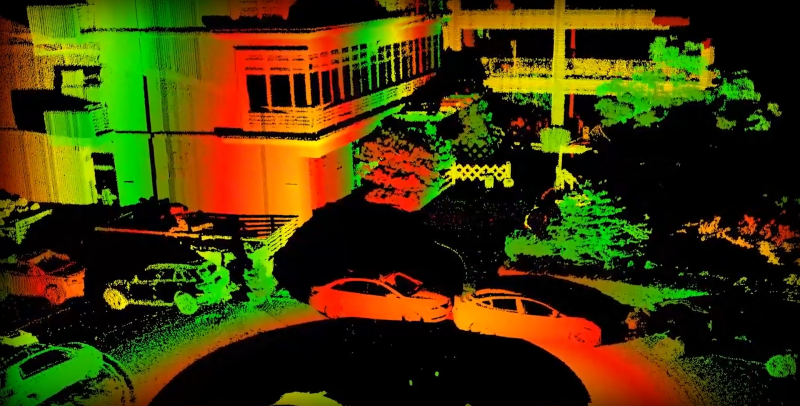LiDAR for Obstacle Avoidance: Revolutionizing Collision Avoidance Systems
Author: Release time:2023-11-15 09:17:05
In today’s fast-paced world, the need for advanced collision avoidance systems has become paramount. With the increasing number of vehicles on the road and the rise of autonomous vehicles, ensuring safety through effective obstacle-avoidance technology is crucial. One such technology that has gained significant attention is LiDAR (Light Detection and Ranging). This blog explores how LiDAR is revolutionizing collision avoidance systems and its applications in various industries.
Collision avoidance system market
The collision avoidance system market is on the verge of significant expansion, driven by progressive regulatory standards and the transformative properties of this crucial technology. These systems enable vehicles to make semi-autonomous and autonomous decisions, ushering in a new era of automotive safety and efficiency.
According to industry reports, the global collision avoidance system market size is expected to reach USD 157.47 billion by 2030, with a compound annual growth rate (CAGR) of 11.4% from 2023 to 2030. The updated ratings of safety agencies and the incorporation of anti-collision systems in mass-market models will drive market growth over the next six years.
Sensor technology and collision avoidance systems
With increasing demand for heightened security from consumers and governments alike, the collision avoidance system market is poised for rapid growth. Sensor technology has advanced to produce sophisticated devices that seamlessly integrate into various components of a vehicle, making this market one of the most promising in the automotive sector. Despite potential setbacks due to high costs, manufacturers who venture into this rapidly evolving market have limitless potential for success. Investing in collision avoidance systems means investing in the future of transportation safety and innovation.
Consumer awareness and extensive research and development efforts by market players have fueled this growth. Collision avoidance systems empower vehicles with semi-autonomous and autonomous decision-making capabilities. The rising demand for security from consumers and governments further drives demand for these systems.
Recent developments in sensor technology focus on creating highly sophisticated devices that can be integrated into different parts of an automobile. Anti-collision systems allow automotive original equipment manufacturers (OEMs) to add intelligence to achieve their goal of developing autonomous cars.
Strict legal regulations mandate sensors’ inclusion in motor vehicles, which further drives demand for collision avoidance systems. However, the high costs associated with long-range radars and LiDAR-based systems may restrain market growth as low-priced carmakers may hesitate to increase vehicle costs.
Key highlights from the Collision Avoidance System Market (2023–2030) report include:
1) Radar systems hold a significant market share of 43.3% in 2022 and are expected to gain further market share in the coming years. The decreasing prices of radars have led to increased adoption by various automotive OEMs.
2) Camera-based collision avoidance systems are predicted to increase rapidly as a result of government rules requiring their incorporation into automobiles.
3) Adaptive cruise control, which relies on long-range, medium-range, and short-range radar systems to automatically adjust a vehicle’s speed, held a significant portion of the market in 2022.
4) Technological advancements may require the mandatory installation of collision avoidance systems in vehicles to counter the threat of accidents caused by human errors, which account for 90% of accidents, according to a UN Road Safety Collaboration study from 2014.
5) Europe is predicted to maintain its market leadership over the forecast period, holding more than 33.0% of the market in 2022.
About LiDAR technology
One crucial technology driving collision avoidance systems is LiDAR (light detection and ranging). LiDAR uses laser beams emitted from sensors mounted on vehicles to measure distances and create detailed maps of surroundings. This technology plays a vital role in enabling autonomous vehicles’ perception capabilities by providing accurate, real-time data about objects and obstacles around them.
LiDAR-based systems offer several advantages over other sensor technologies like radar or cameras. They provide high-resolution, three-dimensional images that allow precise detection and tracking of objects at longer ranges compared to cameras or radars alone. This capability is especially crucial for autonomous vehicles operating at higher speeds or navigating complex environments with multiple obstacles.
LiDAR-based systems are particularly effective in challenging weather conditions such as rain, fog, or low-light situations where other sensor technologies may struggle. The laser beams emitted by LiDAR sensors are not affected by these conditions and can provide reliable data even in adverse environments.
Furthermore, LiDAR sensors offer a high level of accuracy and precision in detecting objects. They can distinguish between different types of objects, like pedestrians, vehicles, or stationary obstacles, with great accuracy. This capability allows autonomous vehicles equipped with LiDAR-based systems to make informed decisions about their surroundings and take appropriate actions to avoid collisions.
While cost remains a challenge for the widespread adoption of LiDAR-based systems in mass-market models, ongoing research and development efforts aim to reduce manufacturing costs while maintaining high-performance standards. As technology continues to evolve rapidly, it is expected that the cost barrier will gradually diminish over time.
The Role of LiDAR in Collision Avoidance Systems

1. Accurate Object Detection:
LiDAR provides highly accurate distance measurements with sub-centimeter precision, enabling collision avoidance systems to detect even small obstacles effectively. This accuracy helps in distinguishing between stationary objects like trees or lampposts from moving ones like pedestrians or other vehicles.
2. Real-Time Data
LiDAR sensors can capture thousands of data points per second, providing real-time information about an object’s position, velocity, size, and shape. This continuous stream of data allows collision avoidance systems to make split-second decisions based on changing road conditions.
3. Enhanced Depth Perception
Unlike traditional camera-based vision systems that struggle with depth perception in low-light conditions or adverse weather conditions such as fog or rain, LiDAR can effortlessly penetrate these challenges due to its reliance on laser beams. This makes LiDAR an ideal choice for collision avoidance systems, ensuring reliable obstacle detection in all weather conditions.
4. 360-Degree Coverage
LiDAR sensors can provide a complete 360-degree view of the vehicle’s surroundings, eliminating blind spots and significantly enhancing safety. This comprehensive coverage allows collision avoidance systems to detect obstacles from all directions, reducing the risk of accidents caused by sudden lane changes or unexpected obstacles.

Applications of LiDAR in Collision Avoidance Systems
1. Automotive Industry
The automotive industry is one of the primary beneficiaries of LiDAR technology for obstacle avoidance. Autonomous vehicles heavily rely on LiDAR sensors to navigate safely through complex environments, detecting pedestrians, cyclists, and other vehicles accurately.
2. Drones and Robotics
LiDAR technology has found extensive applications in drones and robotics as well. Drones equipped with LiDAR sensors can avoid collisions with buildings or other objects during flight operations autonomously. In robotics, LiDAR enables robots to navigate indoor spaces without colliding with furniture or walls.
3. Industrial Safety
In industrial settings such as warehouses or manufacturing plants where heavy machinery operates alongside human workers, collision avoidance systems using LiDAR play a crucial role in preventing accidents and ensuring worker safety.
4. Aerospace Industry
LiDAR-based collision avoidance systems are also gaining traction in the aerospace industry for aircraft navigation during takeoff and landing procedures where visibility may be limited due to fog or poor weather conditions.
Conclusion
Collision avoidance systems based on LiDAR technology play a crucial role in enabling autonomous vehicles’ perception capabilities. These systems provide accurate real-time data about surrounding objects and obstacles through high-resolution three-dimensional imaging. Despite challenges related to cost barriers for mass-market adoption, ongoing advancements in sensor technology will continue to drive progress toward safer and more efficient transportation solutions.
The increasing demand for autonomous vehicles and the growing emphasis on safety in the automotive industry has driven significant advancements in LiDAR technology. Manufacturers are continuously working on developing smaller, more affordable, and more efficient LiDAR sensors that can be easily integrated into vehicles without compromising performance.